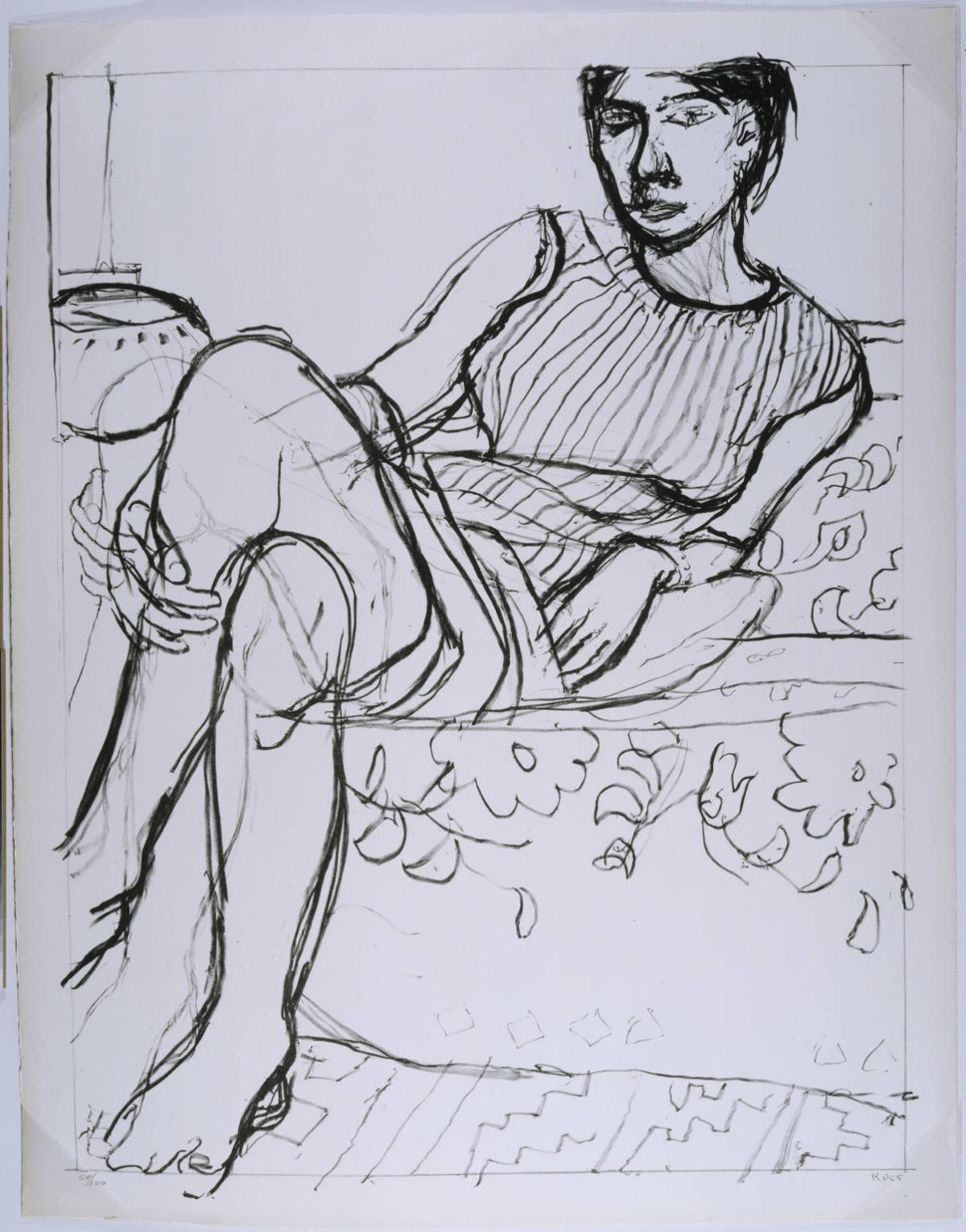Seated Woman in Striped Dress
Richard Diebenkorn ( 1965 )

Although his is best known as a painter, Richard Diebenkorn’s prints were integral to his life as an artist. He used the medium as a means to reevaluate his creative process and rework his ideas. Many of Diebenkorn’s prints show him experimenting with formal and thematic ideas that also appear in his paintings. Diebenkorn usually worked in a series to explore an abstract idea or figurative subject through many variations. Examples of the print techniques that Diebenkorn used during his lifetime include etching, lithography, aquatint, and woodcut.
Diebenkorn made his first prints in 1948, working on and off at printmaking for the next thirty years. In the mid-1950s, Diebenkorn began exploring a loose figurative style that he developed after abandoning the abstraction for which he had first received attention. During the following decade, he established an important collaborative relationship with printers Kathan Brown at Crown Point Press and June Wayne at the Tamarind Lithography Workshop. Tamarind had a deep and lasting impact on the methods and techniques of contemporary printmaking, encouraging a whole generation of artists to explore the unique qualities of lithography. Through the efforts of the workshop, interest in lithography greatly expanded throughout the United States, and artists eagerly explored new materials and techniques, expanding the possibilities in the medium. The primary focus of Tamarind was to nurture the collaborative spirit between artist and master printer, which the program’s founders regarded as fundamental to producing exemplary lithographs. In his printmaking, Diebenkorn worked slowly and meticulously, and was skilled in a full range of traditional techniques. Diebenkorn collaborated with master printer Joe Zirker at Tamarind to create Seated Woman in Striped Dress, 1965, a beautiful figurative study that reveals, in its overall handling and sense of design, the artist’s fascination with the compositions of Henri Matisse. It is the museum’s first print and ninth work by the artist to enter the collection. Diebenkorn’s constant pursuit of new methods and visual inspiration won him recognition among printmakers and painters of his generation. The artist died in 1993 in Oakland, California having produced only about two hundred prints in his lifetime.